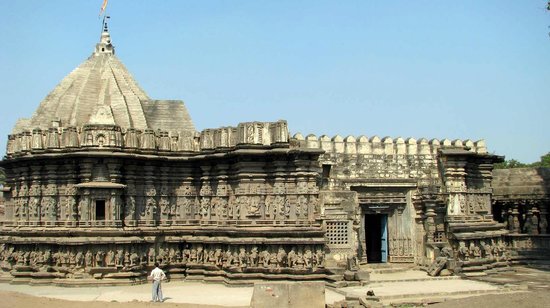Virupaksha Temple at Hampi in Karnataka, India is a famous tourist and religious site. It is located within the ruins of Vijayanagara, the former capital of the Vijayanagara Empire. The ruins are a UNESCO World Heritage Site, listed as the Group of Monuments at Hampi. The temple's history is uninterrupted from about the 7th century (1300 years ago!). The Virupaksha-Pampa sanctuary existed well before the Vijayanagara capital was located here. What started as a small shrine grew into a large complex under the Vijayanagara rulers.
The temple's history is uninterrupted from about the 7th century. The Virupaksha-Pampa sanctuary existed well before the Vijayanagara capital was located here. Inscriptions referring to Shiva date back to the 9th and 10th centuries. What started as a small shrine grew into a large complex under the Vijayanagara rulers. Evidence indicates there were additions made to the temple in the late Chalukyan and Hoysala periods, though most of the temple buildings are attributed to the Vijayanagar period.
Under the Vijayanagara rulers, in the middle of the 14th century, there began a flowering of native art and culture. When the rulers were defeated by invaders in the 16th century, most of the wonderful decorative structures and creations were systematically destroyed.
The cult of Virupaksha-Pampa did not end with the destruction of the city in 1565. Worship there has persisted throughout the years. At the beginning of the 19th century there were major renovations and additions, which included ceiling paintings and the towers of the north and east gopura.
At present the Virupaksha Temple consists of a sanctum, three ante chambers, a pillared hall and an open pillared hall. A pillared cloister, entrance gateways, courtyards, smaller shrines and other structures surround the temple.
Google Map
View Larger Map










